-
 Bitcoin
Bitcoin $118400
0.47% -
 Ethereum
Ethereum $3836
2.20% -
 XRP
XRP $3.157
2.98% -
 Tether USDt
Tether USDt $0.9999
-0.03% -
 BNB
BNB $801.5
1.31% -
 Solana
Solana $180.9
2.07% -
 USDC
USDC $0.9999
-0.02% -
 Dogecoin
Dogecoin $0.2225
2.50% -
 TRON
TRON $0.3285
-1.02% -
 Cardano
Cardano $0.7789
2.60% -
 Hyperliquid
Hyperliquid $43.60
2.39% -
 Sui
Sui $3.892
4.41% -
 Stellar
Stellar $0.4229
3.34% -
 Chainlink
Chainlink $18.01
3.98% -
 Hedera
Hedera $0.2745
6.77% -
 Bitcoin Cash
Bitcoin Cash $582.3
3.38% -
 Avalanche
Avalanche $23.77
1.04% -
 Ethena USDe
Ethena USDe $1.001
0.01% -
 Toncoin
Toncoin $3.493
3.59% -
 Litecoin
Litecoin $110.0
2.48% -
 UNUS SED LEO
UNUS SED LEO $8.936
-0.37% -
 Shiba Inu
Shiba Inu $0.00001304
2.49% -
 Uniswap
Uniswap $9.999
1.09% -
 Polkadot
Polkadot $3.897
3.26% -
 Monero
Monero $308.6
-0.83% -
 Dai
Dai $0.9999
-0.01% -
 Bitget Token
Bitget Token $4.504
-0.04% -
 Pepe
Pepe $0.00001154
2.95% -
 Cronos
Cronos $0.1471
3.06% -
 Ethena
Ethena $0.6691
19.53%
How to increase the position of the monthly volume breakthrough + weekly KD golden cross + daily retracement to the 5-day line?
A monthly volume breakout, weekly KD golden cross below 20, and daily retest of the 5-day MA with low volume offer a high-probability bullish entry when aligned.
Jul 30, 2025 at 10:42 am
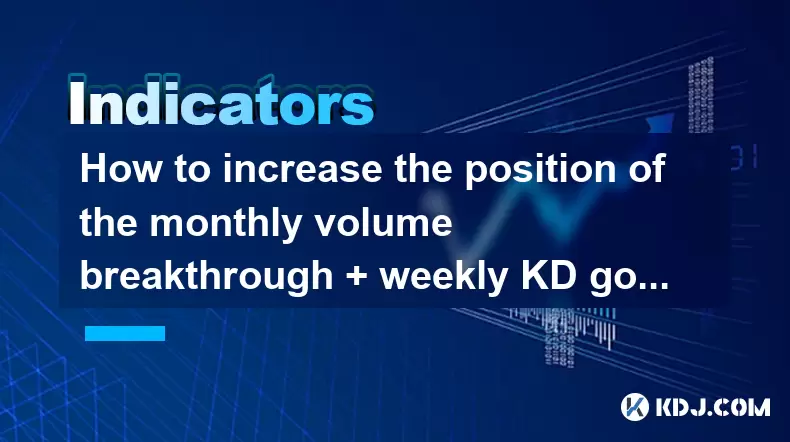
Understanding the Monthly Volume Breakout
A monthly volume breakout occurs when the trading volume in a given month significantly exceeds the average volume of previous months. This phenomenon often signals a shift in market sentiment, indicating increased institutional or retail interest in a particular cryptocurrency. To identify such a breakout, traders should compare the current month’s volume to the 3-month and 6-month average volumes. A breakout is confirmed when the volume exceeds these averages by at least 30% to 50%. This surge typically accompanies price movements, either upward or downward, but in the context of bullish signals, it's most relevant when paired with rising prices. To monitor this, use a charting platform like TradingView and set the timeframe to monthly. Navigate to the volume indicator and visually compare the current bar to historical ones. Enable volume MA (moving average) overlays to automate the comparison. It's crucial to ensure the breakout is not due to a single anomalous event, such as an exchange listing or news spike, unless that event has lasting impact.
Identifying the Weekly KD Golden Cross
The KD indicator, also known as the Stochastic Oscillator, consists of two lines: %K (fast line) and %D (slow line). A golden cross on the weekly chart happens when the %K line crosses above the %D line while both are below the 20 level, indicating oversold conditions and a potential bullish reversal. To set this up, switch your chart to the weekly timeframe and apply the Stochastic indicator with default settings (14,3,3). Watch for the crossover near the lower threshold. It’s essential that the cross occurs from below 20 to avoid false signals in neutral or overbought zones. Confirm the signal by checking whether the price has been in a consolidation or downtrend prior, suggesting exhaustion of selling pressure. Use candlestick patterns like bullish engulfing or hammer formations on the weekly close to strengthen the signal. Avoid acting on the cross if it occurs during a strong downtrend without volume support, as it may be a bear trap.
Analyzing Daily Retracement to the 5-Day Moving Average
After a price increase, a healthy pullback to the 5-day moving average (MA) on the daily chart often presents a re-entry opportunity. This retracement suggests that short-term momentum is cooling, but the uptrend remains intact if the price finds support at the MA. To apply this, set your chart to the daily timeframe and add a 5-period simple moving average (SMA). Observe whether the price dips toward this line after an upward move and stabilizes or bounces off it. The closer the candle’s low or close is to the 5-day MA, the stronger the support. For higher accuracy, combine this with volume analysis — the retracement should occur on lower volume, indicating lack of selling pressure. Additionally, ensure that the 5-day MA is sloping upward, confirming short-term bullish momentum. If the price closes significantly below the 5-day MA, the signal weakens, and caution is warranted.
Combining the Three Signals for Position Entry
To increase your position based on the convergence of these three conditions, you must verify all elements are present simultaneously. First, confirm the monthly volume breakout by checking that the current month’s volume is substantially higher than recent averages and aligns with a price increase. Second, ensure the weekly KD golden cross has occurred below level 20 and is supported by bullish candlestick patterns. Third, on the daily chart, wait for the price to retrace and touch or slightly dip into the 5-day MA with diminishing volume. When all three align, it indicates strong institutional accumulation, a technical reversal on a higher timeframe, and a healthy short-term pullback. At this point, consider increasing your position. Execute the trade by placing a limit order near the 5-day MA to optimize entry price. Avoid market orders to prevent slippage, especially in volatile crypto markets. Set a stop-loss just below the recent swing low on the daily chart to manage risk.
Step-by-Step Execution Plan
- Open your preferred trading platform and load the cryptocurrency pair you're analyzing.
- Switch the chart to monthly view and verify volume has broken out above historical averages.
- Change to weekly timeframe and apply the Stochastic (14,3,3) indicator; confirm %K has crossed above %D under level 20.
- Shift to daily chart, add 5-day SMA, and observe price action approaching this line.
- Check that the retracement occurs on lower volume than the preceding up-move.
- Place a limit buy order at or slightly above the current 5-day MA value.
- Set a stop-loss below the most recent daily candle low or below a key support level.
- Monitor for confirmation candles (e.g., bullish close, higher volume rebound) to validate entry.
Risk Management and Confirmation Filters
Even with all three signals aligned, risk must be actively managed. Allocate only a portion of your capital to this strategy, such as 5% to 10% per trade, depending on your risk tolerance. Use position sizing to adjust the number of coins purchased based on stop-loss distance. To reduce false signals, add filters: ensure the overall market trend (e.g., Bitcoin dominance or sector performance) is neutral or bullish. Avoid low-cap altcoins unless they show strong on-chain activity supporting the volume surge. Check for upcoming events like token unlocks or regulatory news that could invalidate technical patterns. Use on-chain metrics like exchange outflows or active addresses to confirm accumulation. If the volume breakout lacks on-chain support, treat it with skepticism.
Frequently Asked Questions
What if the weekly KD cross happens above level 20?
A cross above level 20 is not considered a golden cross in this strategy. The signal loses strength because it doesn’t emerge from oversold territory. Wait for a retest below 20 followed by a cross, or disregard the signal if the price is already in overbought range.
Can I use an exponential moving average (EMA) instead of SMA for the 5-day line?
Yes, you can use a 5-day EMA, which reacts faster to price changes. However, the SMA provides smoother support and fewer false bounces. Test both on historical data to see which aligns better with your trading style.
How do I confirm the monthly volume breakout isn’t a one-day spike?
Check the distribution of volume across the month. A true breakout shows sustained high volume over multiple weeks, not just one large candle. Use volume profile tools to analyze consistency.
Should I increase position size if all three signals occur on multiple altcoins?
Do not assume correlation implies opportunity. Each coin must be evaluated independently. Even if multiple coins show the pattern, allocate risk per trade and avoid overexposure to a single sector.
Disclaimer:info@kdj.com
The information provided is not trading advice. kdj.com does not assume any responsibility for any investments made based on the information provided in this article. Cryptocurrencies are highly volatile and it is highly recommended that you invest with caution after thorough research!
If you believe that the content used on this website infringes your copyright, please contact us immediately (info@kdj.com) and we will delete it promptly.
- Ozak AI: Can This Underdog Crypto Achieve a Bull Run to $1?
- 2025-07-31 22:30:12
- Coinbase Breach: Navigating Insider Risk and Bolstering Security
- 2025-07-31 23:11:55
- Bitcoin Rebounds, WeWake Presale Gains Traction: What's the Buzz?
- 2025-07-31 22:30:12
- Bitcoin, Altcoins, and Volume Watchlists: Decoding the Crypto Landscape
- 2025-07-31 23:11:55
- Tron, Fartcoin, and BlockchainFX: What's Trending (and What's Not) in the Crypto World
- 2025-07-31 21:32:19
- Bitcoin, Corporate Investments, and Sustainability: A New Era or Fleeting Fad?
- 2025-07-31 20:50:14
Related knowledge

How can you use the MACD histogram to determine trend strength?
Jul 31,2025 at 11:10pm
Understanding the MACD Histogram and Its ComponentsThe MACD (Moving Average Convergence Divergence) histogram is a visual representation of the differ...
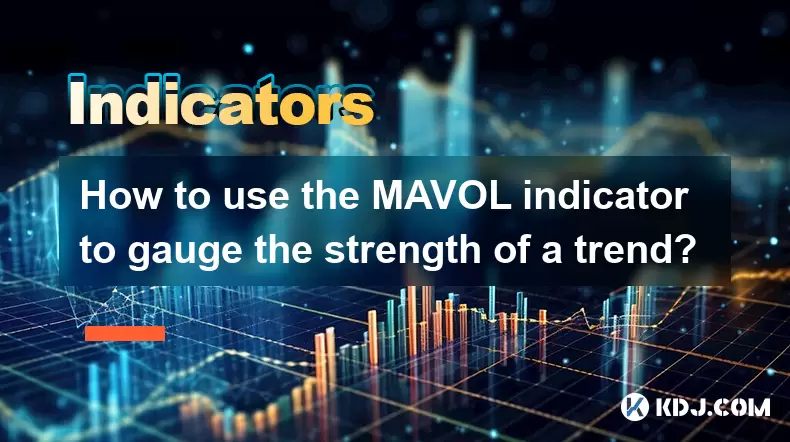
How to use the MAVOL indicator to gauge the strength of a trend?
Jul 31,2025 at 09:57pm
Understanding the MAVOL Indicator in Cryptocurrency TradingThe MAVOL indicator, short for Moving Average of Volume, is a technical analysis tool widel...
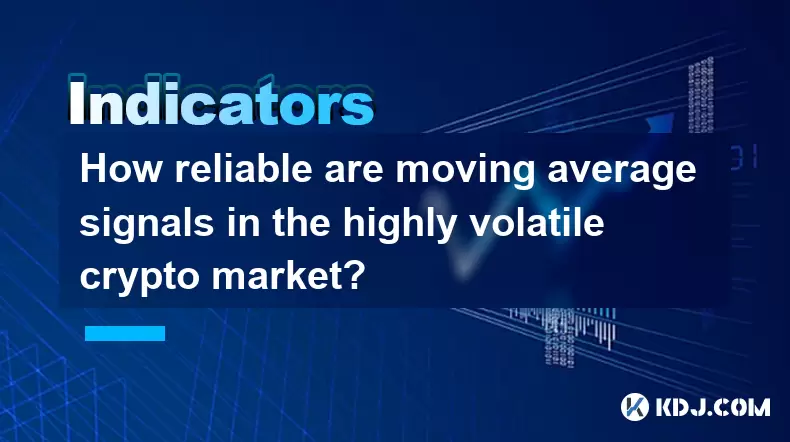
How reliable are moving average signals in the highly volatile crypto market?
Jul 31,2025 at 08:36pm
Understanding Moving Averages in Cryptocurrency TradingMoving averages (MAs) are among the most widely used technical indicators in the cryptocurrency...
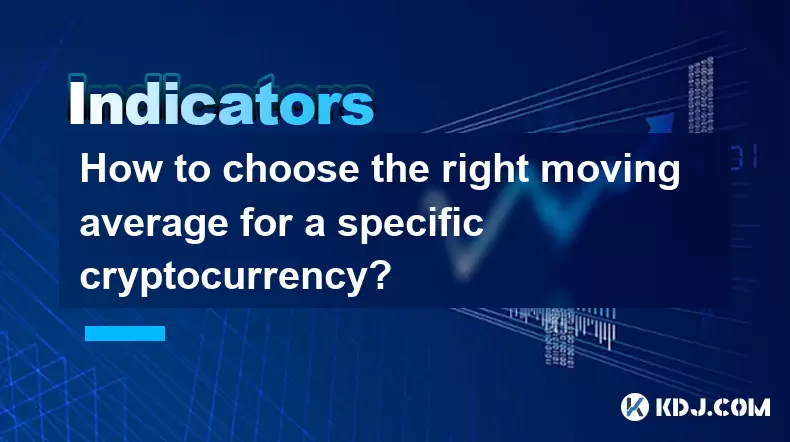
How to choose the right moving average for a specific cryptocurrency?
Jul 31,2025 at 10:29pm
Understanding the Role of Moving Averages in Cryptocurrency TradingMoving averages are foundational tools in technical analysis, widely used by crypto...
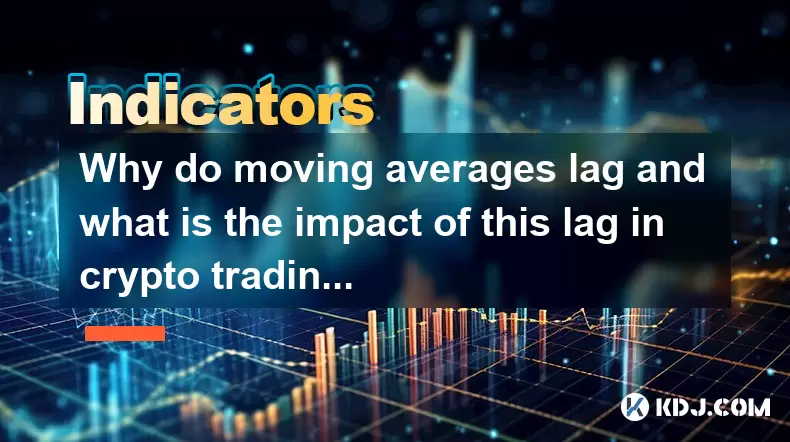
Why do moving averages lag and what is the impact of this lag in crypto trading?
Jul 31,2025 at 08:07pm
Understanding the Concept of Moving Averages in Crypto TradingMoving averages are among the most widely used technical indicators in cryptocurrency tr...
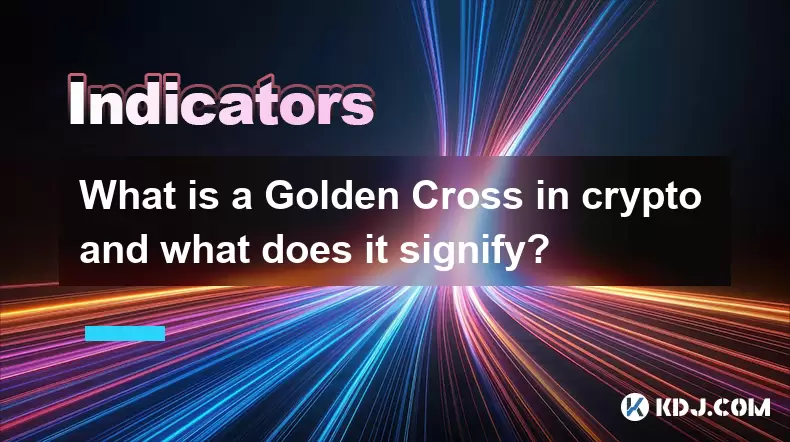
What is a Golden Cross in crypto and what does it signify?
Jul 31,2025 at 10:36pm
Understanding the Golden Cross in Cryptocurrency MarketsThe Golden Cross is a technical analysis pattern widely observed in cryptocurrency trading. It...

How can you use the MACD histogram to determine trend strength?
Jul 31,2025 at 11:10pm
Understanding the MACD Histogram and Its ComponentsThe MACD (Moving Average Convergence Divergence) histogram is a visual representation of the differ...

How to use the MAVOL indicator to gauge the strength of a trend?
Jul 31,2025 at 09:57pm
Understanding the MAVOL Indicator in Cryptocurrency TradingThe MAVOL indicator, short for Moving Average of Volume, is a technical analysis tool widel...

How reliable are moving average signals in the highly volatile crypto market?
Jul 31,2025 at 08:36pm
Understanding Moving Averages in Cryptocurrency TradingMoving averages (MAs) are among the most widely used technical indicators in the cryptocurrency...

How to choose the right moving average for a specific cryptocurrency?
Jul 31,2025 at 10:29pm
Understanding the Role of Moving Averages in Cryptocurrency TradingMoving averages are foundational tools in technical analysis, widely used by crypto...

Why do moving averages lag and what is the impact of this lag in crypto trading?
Jul 31,2025 at 08:07pm
Understanding the Concept of Moving Averages in Crypto TradingMoving averages are among the most widely used technical indicators in cryptocurrency tr...

What is a Golden Cross in crypto and what does it signify?
Jul 31,2025 at 10:36pm
Understanding the Golden Cross in Cryptocurrency MarketsThe Golden Cross is a technical analysis pattern widely observed in cryptocurrency trading. It...
See all articles

























































































